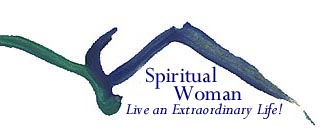 Please Support this Site!
Please Support this Site!
Visit the Spiritual Woman Blog
Get RSS Feed at http://feeds.feedburner.com/SpiritualWoman
 Please Support this Site!
Please Support this Site!
|
Please subscribe to our free ezine below: |
Visit the Spiritual Woman Blog Get RSS Feed at http://feeds.feedburner.com/SpiritualWoman |
|
Home Prayer Christmas Discerning the Will of God Relationships and Family Finding Meaning in Work Nurturing the Creative Spirit When Life Hurts Spiritual Direction Profiles in Faith Book Reviews Links Contact Us Submit an Article |
Selecting a Quilting Machine - What To Look Forby Linda Matthews Sewing machines have been transformed in recent years. Manufacturers now offer electronic and computerized machines that are virtually trouble-free and much more reliable than previous versions. With the addition of specialized features and functions, users are now offered a selection of machines suited to their sewing style. Quilting machines, in particular, are specifically designed to make the quilting experience easy and trouble-free, and also provide the quilter with a machine that can give a professional finish to any project. A quilting machine has special features which include: Extended Bed Space The bedspace is the working area located between the needle and the inside of the machine. An extended bed space offers an area of approximately 8-9" wide by 5-6" high, which is larger than a standard sewing machine and provides more than ample space for a quilter to maneuver bulky quilts or large pieces of fabricHigh Speed Most top-of-the-line quilting machines offer high speed stitching which is usually around 1000 stitches per minute. The high speed rating is normally applied to the straight stitch only, with slightly reduced speed for decorative stitches. This feature offers the quilter the ability to quickly piece and quilt their project.Stitch Regulator Some manufacturers offer an optional attachment for their machines called a stitch regulator. The purpose of the stitch regulator is to provide a consistent stitch length when doing free motion quilting, regardless of how slow or fast the fabric is being moved.Quilting Stitches Specialty quilting stitches, such as buttonhole appliqué and faux hand-quilting stitches, offer a quick and simple alternative to these traditional hand-quilting techniques.Manual Tension Control Some quilting machines are equipped with a manual tension control. This control offers the quilter the ability to regulate the top thread tension quickly and accurately. This offers an advantage over machines with automatic tension control. As quilters often use different weights of thread in the top and bobbin, proper tension control becomes critical. With a manual control a quilter can easily and incrementally fine tune their top tension as they are stitching. With an automatic control it is necessary to access the settings within the control panel of the machine which takes longer and can be less accurate. Manual Stitch Length/Width Control As with the manual tension control, a manual stitch length/width control is also located on the front of the machine and similar benefits apply. Needle Up/Down A needle up/down setting allows the user to stop sewing with the needle in the down position. This is an advantage when working with heavy quilts or when doing free motion quilting. When stopping with the needle down, there is less chance of the quilt slipping providing a continuous stitch line.Auto thread cutter An automatic thread cutter is a very useful feature on a quilting machine. Cutting both the top thread and the bobbin thread in one simple action, it reduces both thread wastage and the time taken to manually trim thread tails.Feed Dogs Control Dropping the feed dogs allows your quilt to move easily when doing free motion quilting. When deciding if a quilting machine is right for you, shop around and visit your local sewing machine dealers. Try out two or three models and then decide which one is for you. About the author: Linda Matthews is a textile artist, designer and teacher, and her website Creative TextileAndQuiltingArts.com offers an abundance of inspiration, education and motivation in the creative aspects of textile and quilt art. Sign up for her ezine "From The Sewing Room". ... It's free !! |